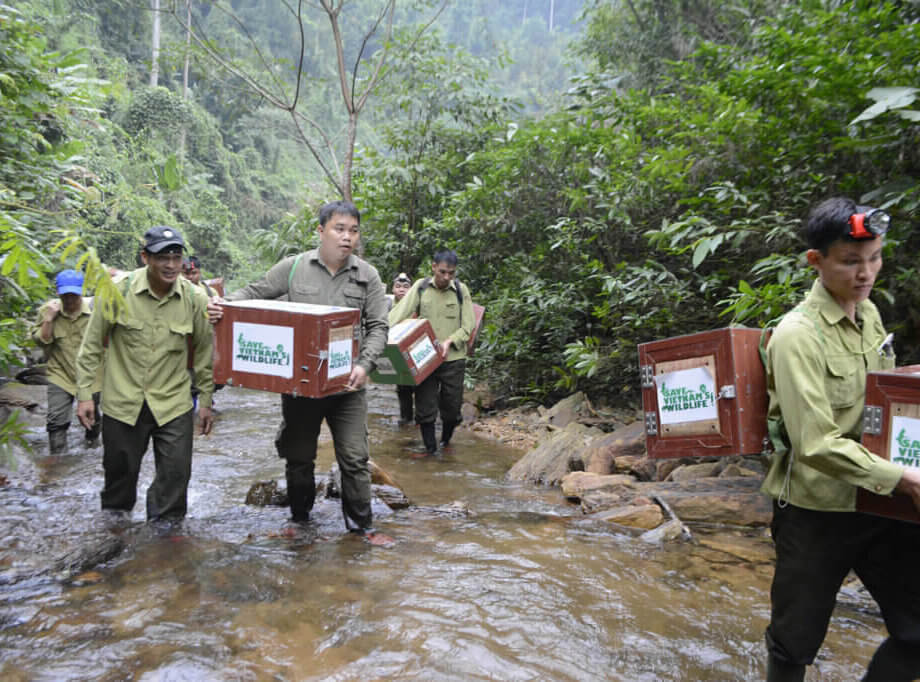Introduction: The Urgency of Protecting Wildlife in Vietnam
Vietnam is home to a rich diversity of wildlife, with thousands of animal species inhabiting its forests, rivers, and mountains. However, this biodiversity is under severe threat due to illegal hunting, trading, and consumption of wild animals. Among the most pressing issues is the consumption of dog meat and wild animal products, which not only endangers animal populations but also poses significant risks to public health and the country’s international image. In recent years, a growing movement has emerged in Vietnam to say “no” to dog meat and wild animal consumption, driven by both grassroots campaigns and official policies. This article explores the current state of wildlife protection in Vietnam, the challenges faced, and the solutions being implemented to safeguard the nation’s natural heritage.
- Introduction: The Urgency of Protecting Wildlife in Vietnam
- Why Is Wildlife Protection Critical?
- The Dog Meat Trade: Tradition, Controversy, and Change
- Wildlife Consumption: A Threat to Biodiversity and Public Health
- Legal Framework and Enforcement: Progress and Gaps
- Changing Consumer Behavior: The Power of Education and Advocacy
- Beyond Awareness: The Need for Stronger Action
- Success Stories and Ongoing Challenges
- In Summary
Why Is Wildlife Protection Critical?
Wildlife plays a vital role in maintaining ecological balance and supporting human well-being. The loss of even a single species can create gaps in the ecosystem, leading to unforeseen consequences for the environment and people. For example, the disappearance of deer or civets from forests can disrupt food chains and reduce biodiversity, ultimately affecting the quality of life for local communities.
Vietnam’s forests are not just a source of natural beauty; they are also crucial for climate regulation, water purification, and providing livelihoods for millions. The illegal hunting and consumption of wild animals, including endangered species, threaten these essential functions. According to scientific research, many species in Vietnam have already become extinct or are on the brink of extinction due to overexploitation for food, medicine, or ornamental purposes.
The Dog Meat Trade: Tradition, Controversy, and Change
The consumption of dog meat has a long history in some parts of Vietnam and other Asian countries. Traditionally, dog meat was considered a delicacy or a food for special occasions. However, this practice has come under increasing scrutiny both domestically and internationally. Surveys by organizations such as FOUR PAWS indicate that only a small percentage of Vietnamese people regularly consume dog or cat meat—around 6%—while a vast majority support banning the trade altogether.
Public attitudes are shifting, especially among younger generations and urban populations. Many now view dogs and cats as companion animals rather than food. The rise in pet ownership and the influence of global animal welfare standards have contributed to this change. In addition, the dog meat trade is associated with animal cruelty, theft, and the spread of diseases such as rabies, which can have serious public health implications.
Case Study: Hoi An Leads the Way
In a landmark move, the city of Hoi An became the first in Vietnam to officially ban the sale and consumption of dog and cat meat. This initiative, launched in partnership with FOUR PAWS, aims to improve animal welfare, prevent disease outbreaks, and enhance the city’s reputation as a safe and friendly tourist destination. The agreement includes vaccination programs, public education campaigns, and strict enforcement of animal protection laws.
Hoi An’s example demonstrates that local governments can play a pivotal role in changing social norms and protecting animals. The city’s success has inspired other regions to consider similar measures, signaling a broader shift in Vietnamese society.
Wildlife Consumption: A Threat to Biodiversity and Public Health
Beyond the dog meat trade, the consumption of wild animal products remains a significant challenge. Many people still believe that wild animal meat is a luxury food or has medicinal properties, despite a lack of scientific evidence. This demand fuels illegal hunting and trading, pushing many species toward extinction.
Vietnam is recognized as a biodiversity hotspot, but it is also a major transit and consumption point for wildlife products. According to the World Wide Fund for Nature (WWF), the main drivers of wildlife consumption are beliefs about health benefits, social status, and culinary curiosity. Studies show that both domestic and international tourists have contributed to the demand for wild animal meat and products, with some consuming these items multiple times per year.
The Impact of Illegal Wildlife Trade
The illegal wildlife trade not only threatens animal populations but also increases the risk of zoonotic diseases—illnesses that can jump from animals to humans. The COVID-19 pandemic highlighted the dangers of close contact with wild animals and the need for stricter controls on wildlife markets. In Vietnam, authorities and NGOs have launched numerous campaigns to raise awareness about these risks and promote alternative livelihoods for communities that depend on hunting or trading wildlife.
Legal Framework and Enforcement: Progress and Gaps
Vietnam has made significant strides in strengthening its legal framework for wildlife protection. Laws such as Decree 35/2019 (amended by Decree 07/2022) and articles 234 and 244 of the Penal Code impose severe penalties for illegal hunting, trading, and consumption of endangered species, with prison sentences of up to 15 years for serious offenses.
Despite these laws, enforcement remains a challenge. Illegal activities persist due to high demand, weak monitoring, and corruption. Some legal loopholes, such as unclear definitions of protected species or inadequate procedures for handling confiscated animals, hinder effective prosecution. Experts argue that legal reforms must be accompanied by robust enforcement and community engagement to achieve lasting results.
Changing Consumer Behavior: The Power of Education and Advocacy
One of the most effective ways to protect wildlife is to reduce demand for wild animal products. Education and advocacy campaigns have played a crucial role in shifting public attitudes and behaviors. Organizations like the Center for Nature Education (ENV) and FOUR PAWS have organized events, distributed educational materials, and mobilized celebrities to speak out against wildlife consumption.
For example, ENV’s “Action for Wildlife” project encourages people to pledge not to use, buy, or keep wild animals as pets. Creative campaigns, such as art contests for students and public exhibitions, help spread the message to diverse audiences. These efforts have led to tangible changes, with many individuals and families choosing to stop eating dog meat or using wildlife products after learning about the consequences.
Community and Youth Engagement
Youth involvement is particularly important for sustaining long-term change. Many young people in Vietnam are now leading the charge in advocating for animal welfare and environmental protection. Their influence extends to their families and communities, helping to break long-standing habits and reshape cultural norms.
Beyond Awareness: The Need for Stronger Action
While awareness campaigns are essential, experts emphasize that they must be complemented by concrete actions. Investigative journalism has revealed that, despite high-profile campaigns, illegal hunting and trading of wild animals continue in many areas. Social media platforms sometimes even facilitate the sale of protected species, making enforcement more difficult.
To address these challenges, some provinces have introduced stricter regulations. For instance, Thua Thien Hue has banned government officials from consuming wild animal meat and required restaurants to sign commitments not to sell such products. Violators face disciplinary action, including dismissal and criminal prosecution. These measures, combined with public education, have led to a significant increase in the number of wild animals voluntarily surrendered to authorities.
International and Regional Cooperation
Vietnam’s efforts are part of a broader regional and global movement to combat wildlife crime. International organizations, such as WWF and WildAid, support local initiatives and provide technical assistance for law enforcement, public health, and sustainable development. Cross-border cooperation is essential to disrupt trafficking networks and protect migratory species.
Success Stories and Ongoing Challenges
There have been notable successes in Vietnam’s fight against wildlife consumption. The decline in dog meat consumption, the rise of animal welfare cities like Hoi An, and the growing number of wildlife rescue centers all point to positive trends. However, challenges remain, including persistent demand, limited resources for enforcement, and the need for alternative livelihoods for communities involved in the wildlife trade.
Experts agree that a multi-pronged approach is necessary. This includes:
- Strengthening legal frameworks and closing loopholes
- Enhancing law enforcement and prosecution of offenders
- Expanding public education and community engagement
- Promoting sustainable livelihoods for rural populations
- Fostering international cooperation and information sharing
In Summary
- Vietnam’s biodiversity is under threat from illegal hunting, trading, and consumption of wild animals, including dog meat.
- Public attitudes are shifting, with most Vietnamese now opposing the dog meat trade and supporting stronger animal protection laws.
- Local initiatives, such as Hoi An’s ban on dog and cat meat, demonstrate the effectiveness of policy and community action.
- Education and advocacy campaigns are crucial for changing consumer behavior and reducing demand for wildlife products.
- Legal reforms and strict enforcement are needed to deter offenders and protect endangered species.
- International cooperation and sustainable development are key to long-term success in wildlife conservation.
- Protecting wildlife is not only about saving animals—it is about safeguarding Vietnam’s natural heritage, public health, and future generations.












